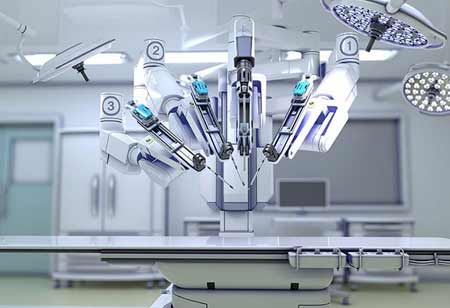Thank you for Subscribing to Healthcare Business Review Weekly Brief
Be first to read the latest tech news, Industry Leader's Insights, and CIO interviews of medium and large enterprises exclusively from Healthcare Business Review
Revolutionizing Pathology with Innovation
Pathology is a cornerstone, guiding diagnoses and treatment decisions with microscopic precision.

By
Healthcare Business Review | Tuesday, April 30, 2024
Stay ahead of the industry with exclusive feature stories on the top companies, expert insights and the latest news delivered straight to your inbox. Subscribe today.
The digital transformation accelerates diagnosis and enables the aggregation of vast datasets for research and analysis.
FREMONT, CA: Pathology is a cornerstone, guiding diagnoses and treatment decisions with microscopic precision. The field is not immune to the sweeping tide of digital innovation. From digitizing slides to AI-powered diagnostics, technology is reshaping the future of pathology in ways that promise to enhance accuracy, efficiency, and patient outcomes. Digital pathology, digitizing traditional glass slides, marks a significant leap forward in the field. Pathologists can now analyze specimens remotely, collaborate seamlessly, and integrate data with other medical records by converting these slides into high-resolution digital images.
AI is another game-changer in pathology, offering human expertise and machine intelligence. ML algorithms, trained on massive datasets of annotated pathology images, can accurately identify patterns and anomalies. The capability extends beyond mere detection to predictive analytics, where AI algorithms forecast disease progression and treatment response based on patient data. The most promising application of AI in pathology is the development of computer-aided diagnosis (CAD) systems. The systems act as virtual assistants to pathologists, flagging suspicious regions on digital slides and providing quantitative analysis of tissue characteristics.
Integrating genomic data with pathology findings enables precision oncology, where therapies are selected based on the genetic alterations driving tumor growth. CAD systems can reduce diagnostic errors and improve workflow efficiency. Telepathology is another facet of the digital revolution in pathology, enabling remote consultation and diagnosis. Telepathology platforms facilitate real-time collaboration between pathologists, ensuring timely and accurate diagnoses. Telepathology transcends geographical boundaries, allowing pathologists to provide expert opinions globally and bridge the gap in healthcare disparities. The advent of digital pathology and AI-driven diagnostics also brings challenges and considerations.






